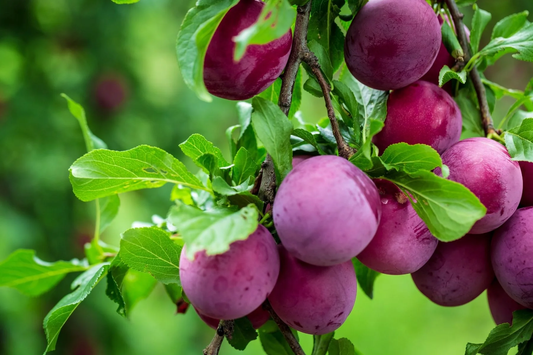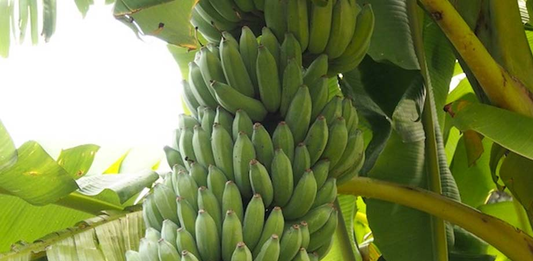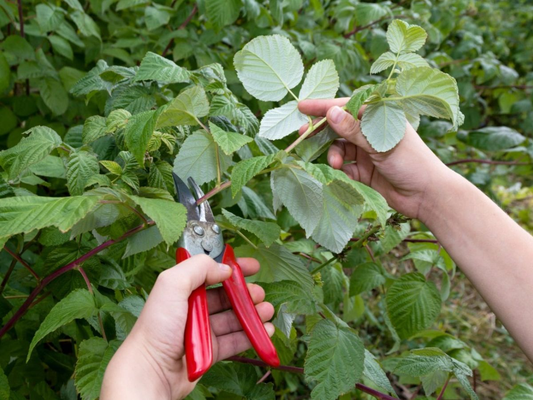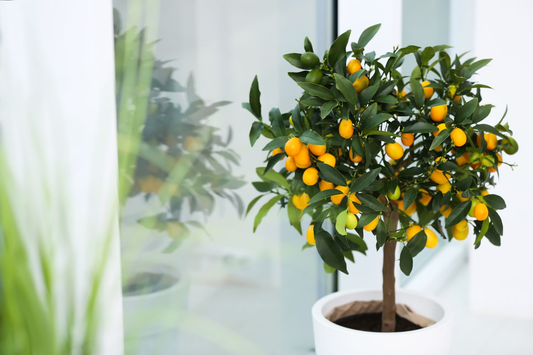Plant Your Own Herbs! Here’s the Scoop on the Best Seeds for Starting a Herb Garden
Share
Table of Contents
1. Introduction to Starting a Herb Garden
Growing your own herb garden is one of the most rewarding and enjoyable gardening experiences. Whether you're a beginner or a seasoned gardener, cultivating fresh herbs right from your backyard or windowsill brings countless benefits to your life. Here’s why starting a herb garden from seeds could be the best choice for you:
1.1 Why Grow Your Own Herbs?
- Enhances Cooking: Fresh herbs can take your cooking to the next level, bringing unique flavors and aromas to every dish.
- Supports Natural Remedies: Many herbs offer medicinal benefits and can be used for teas, salves, or tinctures to support well-being naturally.
- Improves Home Aesthetics: Lush green herbs add beauty and a natural vibe to any space, whether it's your kitchen counter, windowsill, or patio.
1.2 The Appeal of Growing Herbs from Seeds
- Cost-Effectiveness: Seeds are much more affordable than mature plants, allowing you to start with a low budget and grow a wide variety of herbs.
- Greater Variety: Growing from seeds gives you access to a larger selection of herbs that might not be available as potted plants at local nurseries.
- Satisfaction in Growth: There's a unique sense of accomplishment in watching plants grow from seeds to mature herbs, giving you a deeper connection to the gardening process.
1.3 Hook: Why Start with Seeds?
If you’re looking for a way to enjoy fresh, homegrown herbs without the high cost or commitment of purchasing mature plants, starting with seeds is a fantastic option. Not only will you experience the magic of nurturing your herbs from the very beginning, but you’ll also have the freedom to grow exactly the types and varieties you love.
So, get ready to plant your own herbs and discover the simplicity, satisfaction, and rewards of growing from seeds!

2. Why Start a Herb Garden from Seeds?
Starting a herb garden from seeds offers a unique set of benefits that can make your gardening journey even more rewarding. While it may take a bit of patience and effort, the rewards are well worth it. Here are some key reasons why starting from seeds is an excellent choice for both beginners and experienced gardeners:
2.1 Advantages of Growing Herbs from Seeds
- Cost Savings: Seeds are generally more affordable than buying young plants, making it possible to grow a wide variety of herbs without breaking the bank.
- Greater Variety of Herb Species: Seed packets often include a wider selection of herbs, giving you the freedom to choose specific varieties, flavors, and even rare species that might not be available as potted plants at nurseries.
- Satisfaction in Nurturing Plants: Watching a plant grow from seed to harvest is immensely satisfying. It provides a deeper connection to the gardening process and a sense of pride as you see your herbs thrive.
2.2 The Growing Process and Patience Required
Starting from seeds requires patience, as herbs generally take longer to reach maturity compared to purchased plants. Here’s a quick overview of the process:
- Planting: Begin by sowing seeds in well-draining soil, either indoors or outdoors, depending on the herb.
- Germination: Some herbs may take 1-2 weeks to germinate, while others might take a month or more.
- Transplanting: As seedlings grow, they may need to be transplanted into larger containers or the garden bed.
- Harvesting: Once mature, your herbs are ready to be harvested and enjoyed fresh or stored for later use.
2.3 Top Herbs to Grow from Seeds
Certain herbs are particularly rewarding when grown from seeds. Here are a few excellent options:
- Basil: Fast-growing and perfect for culinary use, basil is one of the most popular herbs to grow from seed.
- Parsley: While it may take longer to germinate, parsley is resilient and versatile in the kitchen.
- Cilantro: Quick to grow and easy to care for, cilantro is ideal for beginners and adds fresh flavor to many dishes.
3. Essential Tips for Growing Herbs from Seeds
Growing herbs from seeds can be a fun and rewarding experience, but getting started requires some basic knowledge and preparation. Here’s a guide to help ensure successful germination and healthy herb growth right from the beginning:
3.1 Selecting High-Quality Seeds
- Choose Reputable Brands: Purchase seeds from trusted sources to ensure they’re fresh and viable.
- Check Expiration Dates: Seed packets often have expiration dates; fresher seeds have a higher chance of germinating successfully.
- Look for Organic and Non-GMO Options: If possible, opt for organic, non-GMO seeds to grow herbs naturally and sustainably.
3.2 Key Factors for Successful Germination
- Soil Type: Use a light, well-draining seed-starting mix that retains moisture but doesn’t get soggy. Avoid heavy garden soil, which can hinder seedling growth.
- Temperature: Most herb seeds germinate well at temperatures between 65°F and 75°F. Consider using a heating mat for consistent warmth, especially in cooler climates.
- Light Requirements: Herbs need plenty of light to grow strong. Place seedlings under a grow light or in a sunny windowsill with at least 6 hours of sunlight per day.
3.3 Choosing Containers and Tools
- Containers: Small pots, seed trays, or even recycled containers like egg cartons can work well for starting seeds. Ensure containers have drainage holes to prevent waterlogging.
- Seed-Starting Tools: Invest in basic tools such as a watering can with a gentle spout, a small hand trowel, and a spray bottle for misting the seeds.
3.4 Starting Seeds Indoors vs. Outdoors
- Indoors: Starting seeds indoors allows for a longer growing season and is ideal for herbs that need consistent temperatures.
- Outdoors: For herbs with hardier seeds, direct sowing outdoors can be an option, especially in warm climates with mild spring and summer temperatures.
3.5 Tips for Maintaining Moisture and Preventing Mold Growth
- Keep Soil Moist but Not Wet: Gently mist seeds with water to keep the soil consistently moist but avoid oversaturating, which can lead to mold.
- Cover Seed Trays: Use a plastic cover or wrap over seed trays to retain moisture until seedlings emerge, but ensure ventilation to prevent mold growth.
- Good Air Circulation: Use a small fan nearby or open windows periodically to improve airflow and reduce the risk of mold on seedlings.

4. Best Herbs to Grow from Seeds for Beginners
If you’re new to gardening, starting with easy-to-grow herbs is a great way to build your skills and enjoy quick, rewarding results. Here’s a list of beginner-friendly herbs, along with some helpful details on what makes each one ideal for seed-starting:
4.1 Basil
- Growth Speed: Fast-growing, with seedlings emerging in just 5-7 days.
- Beginner-Friendly: Basil is forgiving and thrives both indoors on a sunny windowsill or outdoors in garden beds.
- Uses: Perfect for adding fresh flavor to pasta, salads, and pesto.
4.2 Parsley
- Growth Habit: Hardy and adaptable; although slow to germinate (14-28 days), it’s low-maintenance once established.
- Beginner Tips: Soak seeds overnight before planting to speed up germination.
- Uses: Great as a garnish and adds fresh flavor to a wide variety of dishes.
4.3 Cilantro
- Growth Speed: Quick-growing, with seeds sprouting in about 7-10 days.
- Beginner-Friendly: Thrives with minimal care, making it an excellent choice for beginners.
- Uses: Adds bold, fresh flavor to salsas, salads, and international dishes.
4.4 Mint
- Growth Habit: Grows aggressively and spreads quickly, so it’s best grown in containers to prevent it from overtaking other plants.
- Beginner Tips: Mint is resilient and very easy to grow, perfect for beginners.
- Uses: Ideal for teas, desserts, cocktails, and savory dishes.
4.5 Chives
- Maintenance: Very low-maintenance and resistant to most pests, making it perfect for beginners.
- Growth Speed: Germinates in 7-14 days, producing slim, green shoots perfect for culinary use.
- Uses: A flavorful addition to soups, salads, baked potatoes, and as a garnish.
4.6 Thyme
- Hardiness: Hardy perennial that grows well in poor soil and is drought-tolerant, making it easy to care for.
- Beginner-Friendly: Thrives with minimal care, tolerates dry conditions, and is perfect for growing in containers or as ground cover.
- Uses: Adds subtle, earthy flavor to meats, stews, and Mediterranean dishes.
4.7 Dill
- Growth Speed: Quick-growing, with seedlings sprouting within 10-14 days.
- Beginner Tips: Dill prefers cooler weather, so start it in early spring or fall for best results.
- Uses: Excellent for pickling, salads, and adding flavor to fish and vegetable dishes.

5. Step-by-Step Guide to Planting Herb Seeds
Planting herb seeds can be a simple and rewarding process when you follow the correct steps. This guide will walk you through each stage, from preparing your containers to transplanting seedlings. Follow these steps to give your herb seeds the best start:
Step 1: Preparing the Planting Area or Containers
- Choose Containers with Good Drainage: Select pots or trays with drainage holes to prevent water from accumulating and causing root rot.
- Provide Aeration: Use a shallow layer of pebbles or small stones at the bottom of each container to enhance drainage and aeration.
- Outdoor Planting: For outdoor gardens, ensure the soil is loose and well-aerated to support root growth.
Step 2: Using the Correct Potting Mix
- Light, Well-Draining Soil: Use a quality seed-starting mix that retains moisture without becoming compacted. Avoid garden soil, as it can be too dense for seedlings.
- Consider Organic Options: Many seed-starting mixes are available in organic options, ideal for an all-natural herb garden.
Step 3: Sowing Seeds at the Recommended Depth and Spacing
- Check Seed Packet Instructions: Different herbs require specific planting depths and spacing, so refer to the seed packet for guidance.
- General Guidelines: Most herb seeds should be sown at a depth of 1/4 inch. Larger seeds (like dill) may need slightly deeper planting, while tiny seeds (like thyme) can be sown closer to the surface.
- Spacing for Growth: Space seeds according to packet recommendations to prevent overcrowding and allow room for healthy growth.
Step 4: Watering Lightly and Ensuring Moisture
- Initial Watering: After sowing, gently water the seeds to moisten the soil without saturating it.
- Maintain Moisture: Keep the soil consistently moist but avoid overwatering, which can lead to mold or root rot.
- Use a Spray Bottle: Mist the soil with a spray bottle to avoid disturbing the seeds with heavy watering.
Step 5: Providing Appropriate Light Conditions
- Natural Sunlight: Place containers in a sunny location where they can receive at least 6 hours of sunlight per day.
- Grow Lights for Indoor Plants: If growing indoors with limited sunlight, use grow lights to ensure seedlings get the light they need.
- Adjust Distance: Position grow lights 2-4 inches above the seedlings and adjust as they grow to prevent stretching.
Step 6: Monitoring Growth and Transplanting Seedlings if Needed
- Watch for True Leaves: After a few weeks, seedlings will develop true leaves (the second set of leaves) which indicate they’re ready for transplanting.
- Transplanting: For stronger growth, move seedlings to larger containers or garden beds once they’re established.
- Harden Off Seedlings: Before moving outdoor, gradually expose indoor seedlings to outdoor conditions to prevent transplant shock.
6. Caring for Your Herb Seedlings
Once your herb seeds have sprouted, proper care is essential to ensure they grow into healthy, productive plants. Here are some key tips for nurturing your herb seedlings as they mature:
Watering Frequency and Avoiding Common Watering Mistakes
- Water Consistently: Seedlings need consistent moisture, but avoid overwatering. Water when the top inch of soil feels dry to the touch.
- Avoid Waterlogging: Too much water can lead to root rot. Ensure containers have good drainage and don’t leave them sitting in water.
- Use a Spray Bottle: For young seedlings, use a spray bottle to lightly mist the soil. This prevents disturbing the delicate roots and avoids soil compaction.
Light Requirements
- Provide Sufficient Light: Herbs generally require 6-8 hours of sunlight per day. Place them near a sunny window or supplement with grow lights if needed.
- Indoor Light Positioning: Place grow lights 2-4 inches above seedlings, adjusting as they grow. For south-facing windows, ensure herbs receive direct sunlight daily.
-
Specific Herb Needs:
- Basil, Parsley, and Cilantro: Thrive with full sun, so provide maximum light.
- Mint and Chives: Tolerate partial shade and can grow well with moderate sunlight.
- Thyme and Dill: Prefer full sun, especially outdoors, but can adapt to bright indoor light.
Best Temperature and Humidity Conditions
- Temperature: Most herbs grow best in temperatures between 65-75°F (18-24°C). Avoid placing seedlings in drafts or near heat sources.
- Humidity Levels: Seedlings enjoy moderate humidity (40-60%). Indoors, you can use a humidity tray or mist plants occasionally if the air is dry.
- Outdoor Transition: If moving outdoors, wait until the danger of frost has passed. Gradually expose seedlings to outdoor conditions to harden them off.
Fertilizing Guidelines
- Start Fertilizing Gradually: Begin fertilizing herbs when they develop their first true leaves. Use a diluted, balanced fertilizer (e.g., 10-10-10 N-P-K).
- Fertilizer Frequency: Apply fertilizer once every 2-4 weeks during the growing season, depending on the herb type and growth stage.
- Avoid Over-Fertilizing: Too much fertilizer can harm herbs. Dilute liquid fertilizers to half strength for seedlings to avoid burning the roots.
Pruning Herbs Early On
- Encourage Bushy Growth: Start pruning when herbs are about 3-4 inches tall. Pinch off the top sets of leaves to stimulate growth along the sides.
- Enhance Flavor: Pruning promotes more flavorful herbs. For culinary herbs like basil and mint, regular pruning encourages fresh, aromatic leaves.
- Monitor Leaf Size: Large leaves can indicate the plant is focusing on foliage growth. Pruning helps balance foliage and root growth.

7. Avoiding Common Problems When Growing Herbs from Seeds
Growing herbs from seeds is rewarding, but young seedlings can encounter issues that hinder their development. Here’s how to identify and avoid common problems to keep your herb seedlings healthy and strong:
Damping-Off Disease: Causes and Prevention
- What Is Damping-Off? This fungal disease affects young seedlings, causing them to wilt and die suddenly.
- Causes: Excess moisture, poor air circulation, and contaminated soil or containers often contribute to damping-off.
-
Prevention Tips:
- Use sterilized soil and containers to reduce fungal contamination.
- Ensure proper drainage in containers to avoid water accumulation.
- Water seedlings from the bottom or use a light misting to prevent excess moisture on the surface.
Overwatering vs. Underwatering
- Signs of Overwatering: Yellowing leaves, drooping seedlings, and soil that feels consistently wet.
- Signs of Underwatering: Dry soil, wilting leaves, and stunted growth.
-
Solutions:
- Water only when the top inch of soil feels dry to the touch.
- Ensure good drainage in pots and avoid letting water collect in trays.
- For underwatered plants, increase watering frequency slightly but avoid over-saturating the soil.
Common Pests and Natural Remedies
- Aphids: Small, soft-bodied insects that feed on sap. Remove by spraying with a mixture of water and mild soap.
- Fungus Gnats: Tiny flying insects that breed in moist soil. Allow the soil to dry slightly between waterings and consider using a layer of sand on top to deter gnats.
- Neem Oil: A natural pesticide that can be applied to control various pests without harming the plants.
Preventing Mold Growth and Ensuring Air Circulation
- Mold Prevention: Mold thrives in humid, stagnant air, especially when soil is too moist.
- Ensure Good Air Flow: Use a fan near seedlings to promote air circulation and reduce humidity.
- Avoid Overwatering: Keep the soil slightly moist, but not wet, to prevent mold growth on the soil surface.
Troubleshooting Slow or Uneven Germination
- Slow Germination: Can occur if seeds are planted too deep or if soil temperature is too low.
- Uneven Germination: Some seeds take longer to germinate due to variety or inconsistent moisture.
-
Tips for Success:
- Follow the recommended depth and spacing on the seed packet.
- Keep soil temperature around 65-75°F (18-24°C) for optimal germination.
- Ensure consistent moisture without soaking the soil.
8. Top Herb Seeds for Specific Uses
Choosing the right herb seeds depends on your intended use. Whether you’re aiming to enhance your cooking, explore natural remedies, create a fragrant garden, or brew fresh herbal teas, here are some top herb recommendations to get started:
Culinary Favorites
-
Basil: A must-have for cooking, basil adds a robust, slightly sweet flavor to dishes.
- Recommended Varieties: Genovese for classic pesto, Thai basil for a unique, anise-like taste.
-
Parsley: Versatile in both fresh and dried forms, parsley adds brightness to soups, salads, and sauces.
- Recommended Varieties: Italian flat-leaf for robust flavor, curly parsley for a milder taste and garnish.
-
Oregano: Known for its bold, slightly bitter flavor, oregano is ideal for Italian and Mediterranean dishes.
- Recommended Varieties: Greek oregano for strong flavor, Italian oregano for a milder taste.
-
Rosemary: Adds a warm, woody flavor to meats, roasted vegetables, and bread.
- Recommended Varieties: Tuscan blue for cooking, Arp for cold-hardy regions.
Medicinal Herbs
- Chamomile: Known for its calming properties, often used in teas to promote relaxation.
- Echinacea: Popular in natural remedies, echinacea is believed to boost the immune system.
- Calendula: Often used for skin-related issues, calendula has anti-inflammatory and healing properties.
- Peppermint: Used to aid digestion and relieve headaches, peppermint adds a cooling effect to teas and tonics.
Aromatic & Fragrant Herbs
- Lavender: Known for its relaxing scent, lavender is ideal for making essential oils, sachets, and calming gardens.
- Lemon Balm: With a fresh, lemony fragrance, lemon balm is great for relaxation and natural air freshening.
- Thyme: A low-growing herb that adds fragrance to the garden and works well in cooking and essential oils.
Tea Herbs
- Lemon Balm: Known for its mild, lemony flavor, perfect for tea blends that promote calmness.
- Mint: Adds a refreshing, cool flavor to teas and can be easily dried for year-round use.
- Chamomile: Soothes the mind and body, making it a popular bedtime tea option.
9. Harvesting and Storing Herbs Grown from Seeds
Once you’ve nurtured your herb garden from seeds, it’s time to reap the rewards! Proper harvesting and storage will ensure your herbs maintain their peak flavor, potency, and versatility. Here are some tips for preserving the fruits of your labor:
Best Practices for Harvesting Herbs at Their Peak Flavor
- Timing is Key: Harvest herbs in the morning, just after the dew has dried but before the sun is too hot. This ensures the highest concentration of essential oils and flavors.
- Harvesting Leaves: Cut stems above the first or second set of leaves to encourage new growth and prevent over-harvesting.
- Flowering Herbs: For herbs like basil and oregano, pinch off flowers as they appear to maintain the flavor of the leaves.
Methods for Drying, Freezing, and Storing Herbs
- Drying: Bundle herbs like thyme, rosemary, and sage together and hang upside down in a cool, dry space with good air circulation. Alternatively, use a dehydrator for faster results.
- Freezing: Some herbs like basil and parsley freeze well. For easy use later, chop herbs and freeze them in ice cube trays with a bit of water or olive oil.
- Storing: Once herbs are dried, store them in airtight containers such as glass jars to preserve their flavor for longer periods.
How to Preserve Herbs in Oils and Vinegars
- Herb-Infused Oils: Use olive oil or other neutral oils to infuse herbs like rosemary, thyme, or basil. Simply place the herbs in a jar and cover with oil, then let sit for about two weeks before straining and storing.
- Herb-Infused Vinegars: Apple cider vinegar or white vinegar works well for infusing flavors. Add herbs like tarragon, rosemary, or lavender, and let them infuse for up to a month.
Creative Storage Options for Dried Herbs
- Jars: Glass jars or airtight containers keep dried herbs fresh and easily accessible. Label each jar with the herb name and harvest date for easy identification.
- Sachets: Use small cloth bags or pouches filled with dried herbs like lavender or mint for natural air fresheners around the house.
- Hanging Bundles: If you have limited space, tie dried herb bundles and hang them in your kitchen or pantry for easy access and decoration.
Tips for Maintaining Freshness and Potency After Harvest
- Avoid Direct Sunlight: Keep dried herbs away from sunlight to maintain their color and flavor. Store them in a dark, cool place.
- Limit Exposure to Air: Ensure containers are tightly sealed to avoid moisture and air exposure, which can degrade the quality of herbs.
- Use within 6 months: Although herbs can last up to a year, for the best flavor, use dried herbs within six months of harvest.

10. Advanced Tips for Herb Seed Gardeners
For those who have mastered the basics of growing herbs from seeds, there are several advanced techniques that can help elevate your gardening game. These tips will not only enhance your yield but also improve the health and productivity of your herb garden:
Companion Planting
- Improve Growth: Pairing certain herbs with other plants can enhance growth by providing natural support. For instance, basil and tomatoes thrive together, as basil can help repel pests that affect tomatoes.
- Pest Control: Marigolds and nasturtiums act as natural pest repellents when planted alongside herbs like cilantro and dill.
Succession Planting
- Continuous Harvest: To ensure a steady supply of fresh herbs, plant new seeds every few weeks. This technique allows you to harvest mature herbs while new plants are growing.
- Staggered Growth: Try planting herbs like basil and cilantro in stages, so you have a constant supply throughout the season.
Using Cloches and Greenhouses for Extended Growing Seasons
- Cloches: These small, transparent covers create a mini-greenhouse effect, helping to protect herbs from cold temperatures and extend the growing season.
- Greenhouses: A greenhouse allows you to grow herbs year-round, even in colder climates. It also provides better control over temperature and humidity.
Experimenting with Unusual Herb Varieties or Heirloom Seeds
- Unique Flavors: Try growing heirloom or exotic herb varieties to experiment with new flavors and textures in your cooking.
- Unusual Varieties: Herbs like lemon thyme, chocolate mint, or purple basil offer unique twists on traditional garden herbs.
Seed-Saving Tips
- Collecting Seeds: After your plants have matured and flowered, allow some herbs like cilantro, parsley, or dill to go to seed. These seeds can be collected and stored for future planting.
- Storing Seeds: Store harvested seeds in cool, dry, and dark conditions in paper envelopes or glass jars. Label each with the plant variety and harvest date for easy identification.
11. FAQ - Frequently Asked Questions
Here are answers to some of the most common questions about growing herbs from seeds. Whether you're a beginner or an experienced gardener, these tips will help you succeed!
Q1: How long does it take for herb seeds to germinate?
- Germination times vary depending on the herb, but most herbs take between 7-21 days. For instance:
- Basil: 5-10 days
- Parsley: 14-28 days
- Cilantro: 7-10 days
- To encourage faster germination, maintain optimal soil moisture and temperature (65-75°F or 18-24°C). Using a seed heating mat can help speed up the process.
Q2: Do I need special soil for growing herbs from seeds?
- Yes, use a light, well-draining potting mix. A general seed-starting mix is ideal, or you can add perlite to your regular potting soil for better drainage.
- For herbs like mint and rosemary, slightly sandy or loamy soil works best.
Q3: How often should I water my herb seeds and seedlings?
- Water gently, keeping the soil moist but not soggy. Overwatering can lead to root rot, while underwatering can hinder germination.
- Once seedlings are established, water them thoroughly but allow the soil to dry out slightly between waterings.
Q4: Can I grow herbs from seeds indoors year-round?
- Yes, with the right conditions! Ensure your indoor garden gets at least 6 hours of natural sunlight or use grow lights for 12-16 hours daily.
- Maintain a temperature of 65-75°F (18-24°C) to help herbs thrive indoors year-round.
Q5: Are there herbs that should not be grown together?
- Some herbs do better when grown separately due to their growth habits or pest issues. For example, mint should be grown in a separate container as it can overwhelm other herbs.
- Avoid planting strong-smelling herbs like rosemary and thyme near sensitive plants that may be affected by their oils.
Q6: What are the best herbs for small spaces or indoor gardens?
- Compact herbs that do well in small spaces include:
- Chives: Ideal for containers
- Thyme: Grows well in small pots
- Mint: Keep in a container to prevent it from spreading
- Basil: Grows well in window boxes or small pots
- These herbs thrive in containers or small indoor setups, making them perfect for apartments or patios.
12. Conclusion
Starting a herb garden from seeds is a rewarding and cost-effective way to grow fresh herbs right at home. By choosing the right seeds, preparing your growing space properly, and providing the right care, you’ll be able to enjoy a bountiful harvest of flavorful herbs. Whether you're a beginner or an experienced gardener, the process of nurturing plants from seed to maturity offers a sense of accomplishment and joy.
There’s nothing quite like harvesting your own homegrown herbs for cooking, crafting natural remedies, or simply enhancing your space. So, roll up your sleeves, get your seeds, and start planting your own herb garden today—you’ll reap the benefits for months to come!
Additional Resources
From Seed to Harvest: How to Grow Herbs from Seeds Indoors in Any Spac – XRoci
How to Care for Indoor Vegetable Garden: Growing Fresh Food Right from – XRoci
Ready to Grow Your Own Herbs? Here’s Why You Need to Buy Herb Garden K – XRoci
Indoor Tomato Growing Made Easy: How to Grow Tomatoes from Seed Indoor – XRoci




